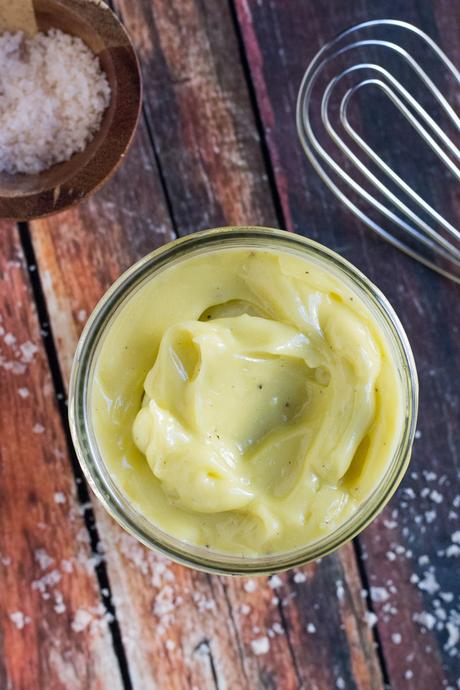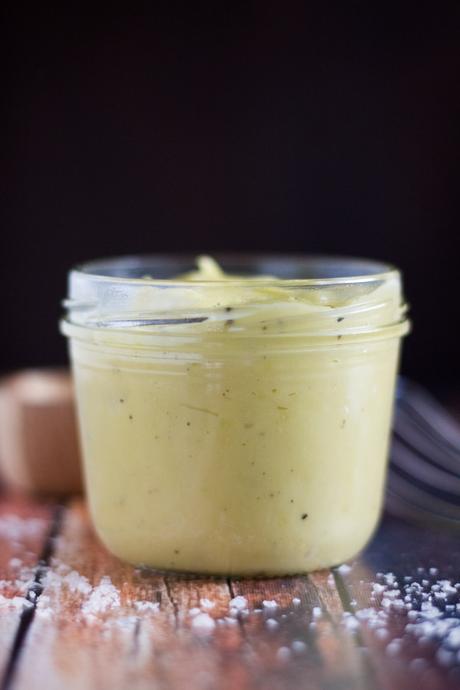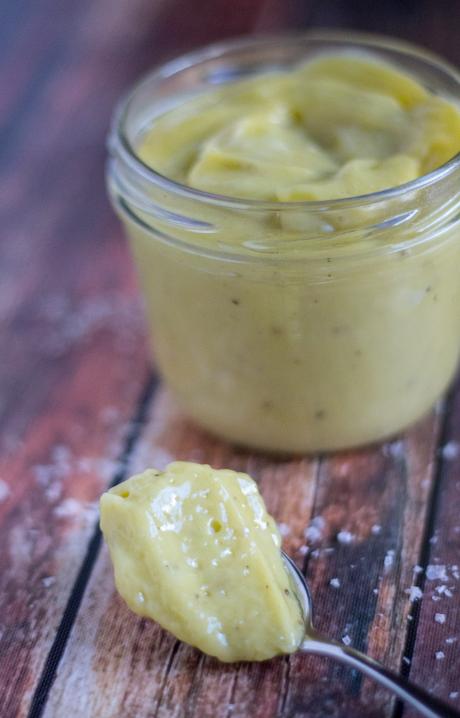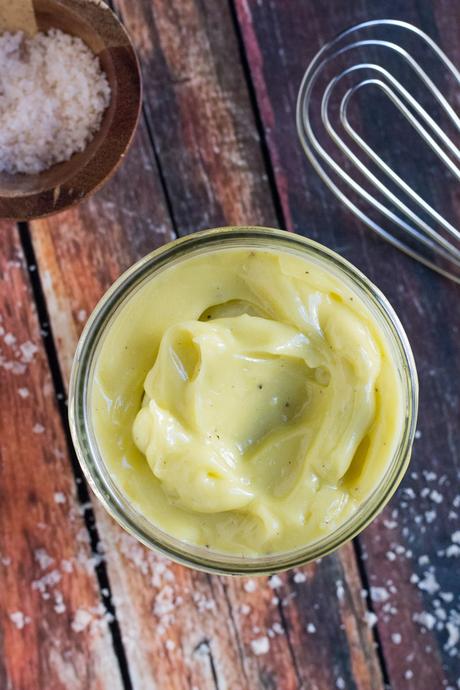
If you have been keeping even half an eye open you will be aware that fermented and cultured foods are this year's hot new food trend. Which is interesting, given that it is also one of the world's oldest food trends. There are very few countries that do not incorporate some form of fermented food into their traditional diet. Personally I find fermented foods contribute greatly to my gut health, so I try to to eat and drink them on a daily basis. This Lacto-fermented Mayonnaise is just one of many cultures currently living in my fridge.
Culturing is one of the oldest methods of food preservation, traditionally used to stockpile food for the long winter months, and culturing your homemade mayonnaise will greatly increase its storage time. Uncultured mayonnaise will only keep for a few days in the fridge before it starts to break down and separate. Yet I have discovered month-old cultured mayonnaise hiding in my fridge that was still perfectly edible.

I ferment my mayonnaise using a small amount of whey from either strained yoghurt or kefir. Strain yoghurt through fine muslin to collect the whey, then eat the thickened yoghurt for breakfast with waffles and roasted strawberries. The whey will keep for a few weeks in a clean jar in the fridge and can also be used to soak beans.
Incorporate a small amount of whey into the mayonnaise, then allow it to sit at room temperature until small bubbles start to develop. I use a glass jar so I can see what is happening. It can take only a couple of hours to ferment in summer, but I often leave the mayonnaise at room temperature overnight in winter. Once the bubbles have started to develop, put the jar in the fridge.

You only need to read the label of a commercial mayonnaise jar to work out why you should be making your own. Full of thickeners, gums and colours, many have never even been introduced to an egg; a key ingredient of mayonnaise. For the longest time I was scared to make my own, but I finally got over that and it is actually very easy. I usually make small batches of mayonnaise by hand as we don't use a lot, but it is very easy to make in any number of kitchen appliances. Choose the method that works best for you.
So shun the mass-produced brands and whip yourself up at batch of your own Lacto-Fermented Mayonnaise. As an added bonus you can be smug knowing that you are at the cutting edge of this year's hot new food trend.
Kitchen Basics: How to Make Lacto-Fermented Mayonnaise

Author: Tania @ The Cook's Pyjamas
- 1 egg yolk
- 1 teaspoon white wine vinegar
- 1 teaspoon Dijon mustard
- 1 teaspoon whey
- 1 small garlic clove, crushed {optional}
- Salt & pepper
- 1 cup extra virgin olive oil
- Sit a medium sized bowl on a folded tea towel to stop it moving around as you work.
- Place the egg yolk, vinegar, mustard, whey, garlic (if using), and salt & pepper into the bowl.
- Whisk the ingredients together to combine.
- Slowly start to add small amounts of the olive oil, whisking to incorporate the oil between each addition. You can slowly begin to increase the amount of oil added, but ensure each addition is whisked in before more oil is added.
- The mixture will start to thicken as the oil is added. You may not need all of the oil to achieve the desired texture, so stop adding oil when you are happy with the consistency.
- Taste the mayonnaise and whisk in additional vinegar, salt & pepper if required.
- Scoop the mayonnaise into a clean glass jar.
- Allow to sit at room temperature until small bubbles can be seen developing in the mayonnaise.
- Place the fermented mayonnaise in the fridge and use within one month.
